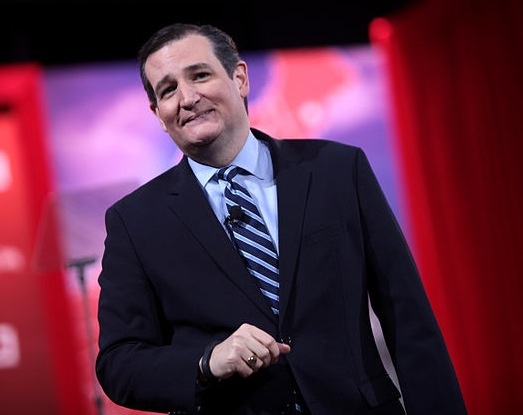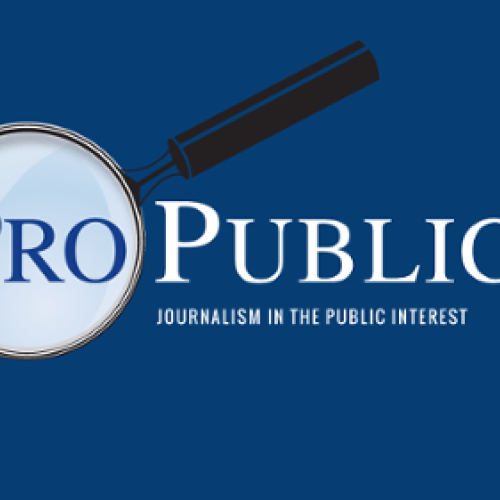Rapid rise in super PACs dominated by single donors

Texas Senator Ted Cruz's bid for the Republican presidential nomination will get help from four super PACs, each controlled by a single donor or donor family. (Photo of Cruz speaking at the 2015 Conservative Political Action Conference by Gage Skidmore via Wikipedia.)
By Robert Faturechi, ProPublica, and Jonathan Stray, special to ProPublica
(This story was co-published with the Daily Beast.)
The wealthiest Americans can fly on their own jets, live in gated compounds and watch movies in their own theaters.
More of them also are walling off their political contributions from other big and small players.
A growing number of political committees known as super PACs have become instruments of single donors, according to a ProPublica analysis of federal records. During the 2014 election cycle, $113 million -- 16 percent of money raised by all super PACs -- went to committees dominated by one donor. That was quadruple their 2012 share.
The rise of single-donor groups is a new example of how changes in campaign finance law are giving outsized influence to a handful of funders.
The trend may continue into 2016. Last week, National Review reported that Texas Senator Ted Cruz's bid for the Republican presidential nomination would be boosted not by one anointed super PAC but four, each controlled by a single donor or donor family.
The Supreme Court's 2010 Citizens United ruling helped usher in the era of super PACs. Unlike traditional political action committees, the independent groups can accept donations of any dollar size as long as they don't coordinate with the campaign of any candidate. Previously, much of the focus in big-money fundraising was on "bundlers" -- volunteers who tap friends and associates for maximum individual contributions of $5,400 to a candidate, then deliver big lump sums directly to the campaigns. Former president George W. Bush awarded his most prolific bundlers special titles such as "Ranger" and "Pioneer."
While bundling intensified the impact of wealthy donors on campaigns, the dollar limits and the need to join with others diluted the influence of any one person. With a super PAC, a donor can single-handedly push a narrower agenda. Last year, National Journal profiled one such donor -- a California vineyard owner who helped start the trend by launching his own super PAC and becoming a power player in a Senate race across the country.
Beyond the single-donor groups, big donations are dominant across all kinds of super PACs, according to the analysis. Six-figure contributions from individuals or organizations accounted for almost 50 percent of all super PAC money raised during the last two cycles.
"We are anointing an aristocracy that's getting a stronger and stronger grip on democracy," said Miles Rapoport, president of Common Cause, an advocacy group that seeks to reduce the influence of money on politics.
ProPublica's analysis identified 59 super PACs that received at least 80 percent of their funding from one individual during the 2014 cycle. They raised a total of $113 million, compared with the $33 million raised by the 34 such groups that existed in 2012.
Donors who launch their own PACs are seeking more control over how their money is spent. And many have complained about the commissions that fundraising consultants take off the top of their donations to outside groups. But the move carries risks if the patron is new to the arena.
Top Single-Donor PACs in 2014
| Super PAC | Largest Donor | Contributions Lean | $ raised from largest donor | % raised from largest donor |
|---|---|---|---|---|
| NextGen Climate Action Committee | Thomas Steyer | Democrat | $66,900,000 | 86% |
| Independence USA PAC | Michael Bloomberg | Democrat | $17,431,931 | 100% |
| Vote 2 Reduce Debt (V2RD) | Kenneth Davis Jr. | Republican | $2,892,526 | 97% |
| Values Are Vital | Ronald Firman | Republican | $2,148,300 | 80% |
| CE Action Committee | Thomas Steyer | Democrat | $1,825,000 | 92% |
| Liberty Principles PAC Inc* | Richard Uihlein | Republican | $1,780,000 | 100% |
| Americans For Progressive Action | Thomas Jordan | Republican | $1,700,000 | 100% |
| Americans For Common Sense (AFCS) | Angelo Tsakopoulos | Republican | $1,347,000 | 98% |
| American Principles Fund | Sean Fieler | Republican | $1,138,724 | 84% |
| CounterPAC | Jim Greer | Republican | $852,123 | 91% |
| Americas PAC | Richard Uihlein | Republican | $670,000 | 89% |
| New Hampshire Priorities | Peter Taul | Republican | $562,000 | 88% |
| American Alliance | Sheldon Adelson | Republican | $500,000 | 86% |
| Our America Fund | Richard Uihlein | Republican | $500,000 | 97% |
| Character Counts Political Action Committee | Gary Davis | Republican | $445,000 | 100% |
| Space PAC | Martine Rothblatt | Democrat | $425,000 | 99% |
| Kansans For Responsible Government | Willis Hartman | Republican | $285,100 | 97% |
| Protect The Harvest Political Action Committee | Forrest Lucas | Democrat | $250,000 | 94% |
| US Jobs Council | Robert Mercer | Republican | $200,000 | 91% |
| Spirit Of Democracy America | Charles Munger Jr. | Republican | $149,375 | 82% |
* Uihlein provided virtually all funding eligible for federal races during the 2014 cycle. Liberty Principles received significant contributions from other donors for state and local races in Illinois, which was the group's focus.
Source: ProPublica analysis
In one cautionary tale, a reclusive 89-year-old Texas oilman with no political experience launched Vote2ReduceDebt, one of the nation's highest-spending conservative super PACs. A ProPublica investigation found that much of the donor's millions went to entities run by the group's consultants or their close associates. The super PAC imploded as principals traded allegations including self-dealing, faked campaign events and a plot to siphon the PAC’s money to a reality TV show.
Bill Burton, a former Obama administration official who helped found Priorities USA, the juggernaut super PAC affiliated with the president's reelection campaign, said he expects donors to face more problems if they continue to go it alone.
"One of two things is going to happen," he said. "We will either see widespread flaunting of coordination rules or we will see some pretty spectacular failures to the tune of millions of dollars."
The single-donor super PACs identified by ProPublica span the political spectrum. Among the top conservative donors were Richard Uihlein, a packaging supplies businessman, and casino magnate Sheldon Adelson. Former New York City mayor Michael Bloomberg spent heavily on both sides but leaned Democrat. Hedge fund titan Tom Steyer dominated on the left.
In 2012 the largest single-donor super PAC was former TD Ameritrade CEO Joe Ricketts' Ending Spending Action Fund, which raised over $14 million, 89 percent of which came from Ricketts. It was the ninth-largest super PAC by spending. In 2014 Steyer's Nextgen Climate Action was the largest super PAC, raising almost $78 million, 85 percent from Steyer. (Steyer's wife, Kat Taylor, is a member of ProPublica's board of directors, and the couple has donated to ProPublica.)
In addition to the super PACs dominated by a single individual, dozens more received the great majority of their funding from one corporation, labor group or advocacy organization. In 2014, those PACs represented 8.6 percent of super-PAC fundraising.
PACs dominated by one donor could run afoul of disclosure laws, according to Larry Noble, the former top lawyer for the Federal Election Commission. Under the rules, political ads must include disclosures about who funded them. Noble said election law would require groups funded by one person to list that donor's name, not just the name of the PAC -- though he couldn't recall the FEC addressing such a case.
Naming the super PAC instead of the donor in the ad, Noble said, also allows the groups to delay disclosing where their money comes from until the next FEC filing date -- potentially weeks after the ad runs.
"It defeats the purpose of the law to allow someone to hide behind a super PAC if they are the only funder," Noble said.
"They want to make it more authoritative, like there's more support. It looks better to say the ad is from Americans for Good Government than from John Smith… That just makes a mockery of the law."
Tags
ProPublica
ProPublica is an independent, nonprofit newsroom that produces investigative journalism in the public interest.
